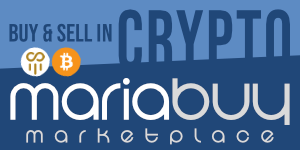Acorn Newsbot
Junior Member
- Joined
- Jan 28, 2006
- Posts
- 22,606
- Reaction score
- 126
A beginner’s guide to top-level domains
The series of letters you type in your browser’s address bar to reach a website is what we call a domain name. For example, Nominet’s domain name is nominet.uk.
A top-level domain (or TLD) is the bit of the domain name that appears after the dot (“.”). Using our previous example, nominet.uk, the TLD is .uk. You might also hear TLDs referred to as domain extensions. .uk is amongst the most common TLDs used by websites, along with .com, .org, .net, and .de.

TLDs can serve as a simple way of understanding what a website is used for or whereabouts in the world it’s based. For example, the .uk in nominet.uk tells you that Nominet is a company based in the United Kingdom. Or if you see a website using a .gov TLD, you’ll know it’s related to government.
There are a number of different types of TLD available and most belong to two groups: country-code TLDs (ccTLDs) and generic TLDs (gTLDs).
ccTLDs are two-letter top-level domains that are reserved for countries, sovereign states, or dependent territories. Examples include .uk for the United Kingdom, .cn for China, .de for Germany, and .ru for Russia. In the case of .co.uk and .org.uk, the extra letters before the ccTLD signify the type of entity the extension is intended for (.co.uk is intended for businesses and .org.uk is intended for non-profit organisations).
In contrast to ccTLDs, gTLDs such as .com, .net, or .blog, are not tied to a specific country and are usually available for anyone to register as general purpose domain extensions. Some gTLDs are restricted and can only be registered by certain people or entities; .law, for instance, is restricted to legal professionals.
The introduction of new GTLDs
ICANN, the Internet Corporation for Assigned Names and Numbers, launched the New gTLD Program in 2011, allowing organisations to apply to set up their own gTLDs. Nearly 2,000 applications were received. We have seen a range of types of gTLDs, such as:
- Geographic gTLDs aimed at serving different regions, e.g. .london, .bayern, .wales, .paris
- Brand gTLDs, where brands own their own TLD, e.g. .bentley, .bbc, .bradesco , .gucci, .barclays
- Professional gTLDs, catering for different professions, e.g. .marketing, .lawyer, .accountant, .photography

For us, the big story within this emergence of new gTLDs is dot brands. Organisations are now able to own branded TLDs, bringing:
- Increased brand awareness
- Additional security for customers online
- Speed and flexibility in the marketing of products, services and campaigns
- Streamlined domain portfolios
A dot brand provides incredible flexibility. By owning a dot brand, an organisation controls an entire branded corner of the internet, their own digital ecosystem. This allows them to register any domain name they like, to use in any way they like, and infuse more innovation, creativity, and security into their domain names and digital strategy.
More valuably, operating from a dot brand makes it more difficult for criminals to execute phishing scams and makes it easier for customers to spot, and avoid, emails from fake accounts. It also reassures customers of the authenticity of the site they are visiting.
Discover more in our dot brand animation and get in touch for more information.
The post The Evolution of Domain Endings appeared first on Nominet.
Continue reading...


















